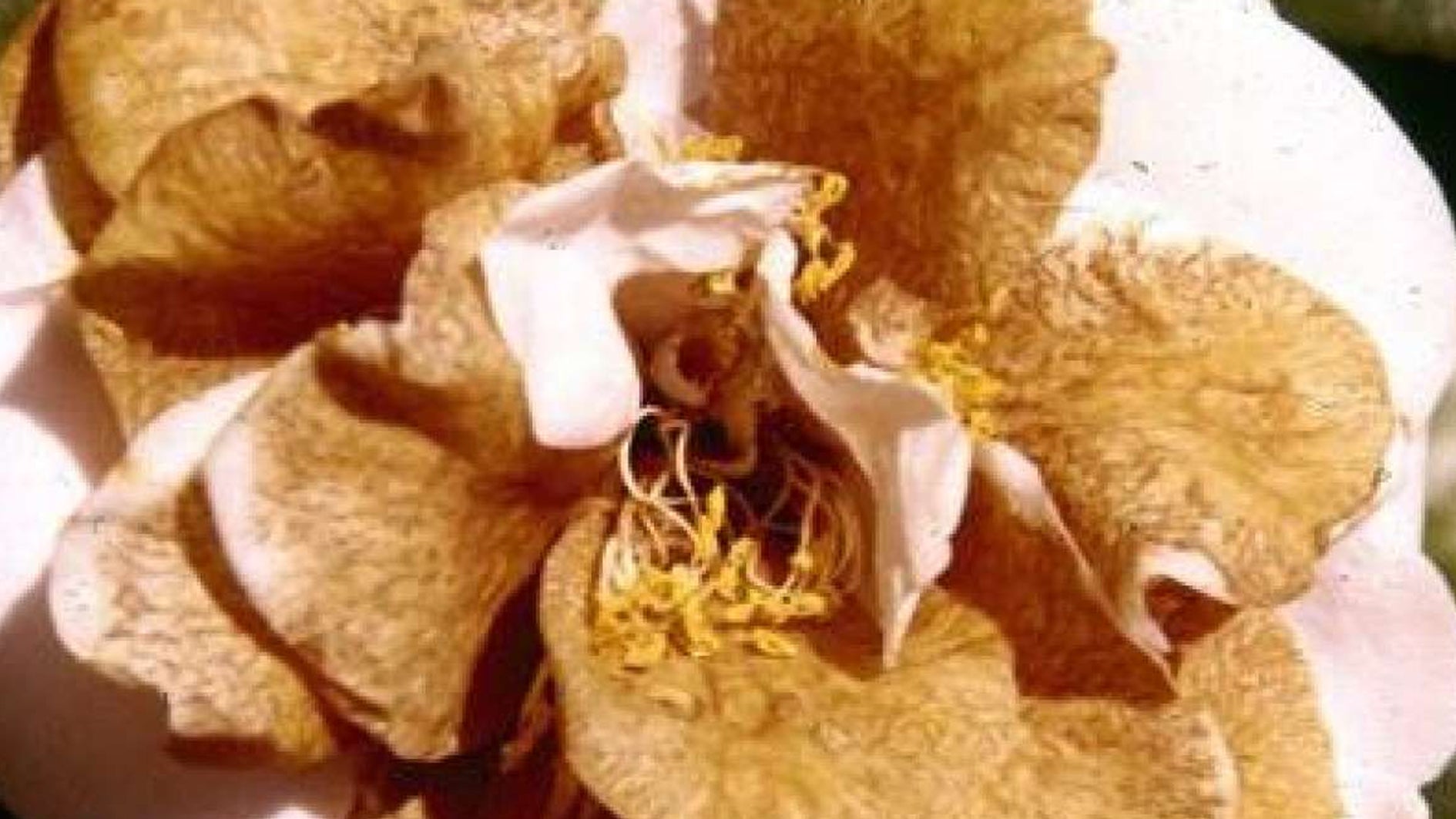
Camellia Flower Blight
02 Oct, 2021
Infection starts as small brown specks on petals, which eventually extend to the entire flower, thereby killing the flower tissues. A grey, cobweb-like growth can also be seen at the base of the petals where they are attached to the stalk of the flower, and in an advanced stage, the fungus forms small, black, hard structures called sclerotia at the base of infected flowers. Eventually, infected flowers fall to the ground. Sclerotia can stay dormant in soil for up to five years, and in favourable environmental conditions (a period of cool weather followed by warmer temperatures and moisture), the sclerotia germinate and send tiny stalks bearing fungal spore cups or apothecia above the ground. Once these apothecia mature, the spores are released forcefully and dispersed by wind. When the spores fall on a camellia petal, they germinate if the temperature and moisture is ambient and penetrate the petal tissue, thus beginning another life cycle of blight.
Almost all species of camellia are susceptible to the disease, however, some varieties, like the Setsugekka (Camellia sasanqua) can escape infection owing to their early flowering.
Prevention
Each year in spring, remove old mulch from around the base of camellias and replace it with fresh new bark or pine straw. The mulch will hamper the spread of spores to the flowers. (Take care not to over-mulch camellia though; burying the root system under more than 2 or 3cm of mulch may harm the plant.
Remove all fallen dead flowers as well as infected flowers on the plant and dispose of them offsite, well away from camellia plants. Do not add them to a compost pile as blight can survive for long periods of time.
Treatment
There is currently no effective treatment for Camellia Flower Blight, so prevention is the best strategy. Dispose of plant material off site, and do not replant camellias in this area.